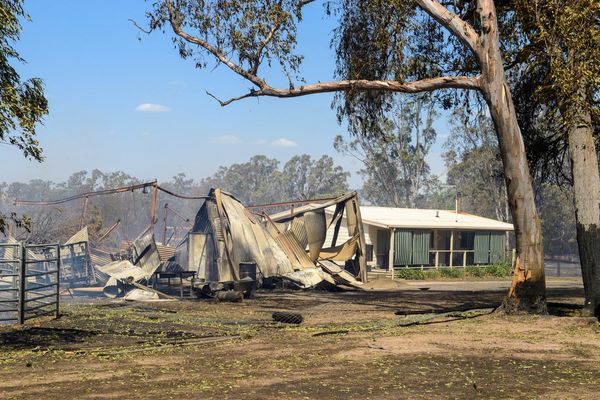
In the midst of the Covid-19 pandemic, Sandra Marinopoulou got thinking about how, as president of the Museum of Cycladic Art, she could start “giving back” to the island chain after which the institution is named. She soon discovered she did not have to look far.
“As luck would have it I was stuck on an isle at the time,” she recalled. “Without the masses, with no tourism whatsoever, the landscape had returned to its natural state, both primitive and virgin.”
The degree to which, at other times, the Cyclades’ culture and biodiversity might have been eclipsed, and even threatened, on account of the islands’ touristic appeal, was all too clear.
“It was as if a light went on,” said Marinopoulou. “It was so obvious what had to be done because all around you could see the difference.”
From its foundation almost 40 years ago, the Museum of Cycladic Art has showcased the ancient cultures of the Aegean and Cyprus in what has since become an unparalleled repository of jewellery, vases and figurines embracing the early Cycladic, Minoan and Mycenaean age.
In her eureka moment Marinopoulou knew the time had come to look forward. “When museums are looking for new missions it was crystal clear that ours has to be the preservation and protection of Cycladic identity.”
What emerged was a scientific committee of archaeologists and environmentalists tasked with helping local people keep the islands’ unique identity alive in the face of tourism and climate breakdown.
No Greek island group is as popular as the Cyclades, which has 24 inhabited isles clustered around Delos, the archipelago’s ancient open-air sanctuary off Mykonos.
Greece has drawn record numbers of tourists in recent years, attracting more than three times its 11 million-strong population. It was the third most visited place on Earth in 2022.
With arrivals in the Cyclades still going strong in October, visitor numbers are up as much on Sifnos and other lesser-known isles as on Santorini, the volcanic outpost where famously Instagrammable sunsets attract huge numbers of tourists year in, year out.

However, in the scramble to cater to holidaymakers, construction has proliferated and, with it, practices that have increasingly threatened the islands’ fragile ecosystem.
Highlighting growing national alarm over the extent of building that is often unregulated and illicit, authorities for the first time began demolishing illegal constructions earlier this year.
“We have come to a point where on every Cycladic island there are swimming pools when there is not enough water for basic needs,” said Dr Angeliki Kosmopoulou, an archaeologist and head of the Athanasios C Laskaridis charitable foundation, who sits on the committee. “One of our intentions is to see how we can help local communities grow without compromising the natural environment, their culture and their natural heritage.”
Kosmopoulou, whose organisation is among those sponsoring the initiative, said that, far from putting tourists off, they would continue to visit the islands if locals revived old traditions and respected their natural resources. “Local people can prosper [by] attracting the like-minded,” she said. “And by gaining their trust that is a point we want to convey.”
Environmental experts have spoken of the urgent need for more sustainable tourism in a region where global heating is projected to rise at unprecedented rates. Although spared the forest fires and floods that hit other parts of Greece last summer, the islands are at risk of rising sea levels, higher air and sea temperatures, heatwaves striking with ever more frequency, and drought.
Precisely because the Cyclades are so small in scale and so replete with archaeological treasures – a legacy of their location between Europe and Asia and hosting of multiple civilisations – they are thought to be that much more vulnerable to the pressures that have come with their ever-growing popularity.

Home to an array of biotopes, the islands are natural habitats for a large number of species of flora and fauna including at least 200 endemic plants and some of the rarest mammals in the Mediterranean.
“We’re at a tipping point, a critical crossroads for their future,” said Demetres Karavellas, who heads WWF Greece and is also a committee member. “At this rate of development it is very hard to imagine what they will look like in 20 years’ time.”
So far nine projects on eight islands have been chosen for support by the committee, ranging from revitalising traditional water management practices on Andros to promoting the art of dry-stone walling on Mykonos and recording the use of traditional instruments on Kea.
But Karavellas said the hope was to build “a critical mass of people” who were not only aware of the risks but prepared to act.
“We need, absolutely, to make the islands more resilient,” he said, adding that like others he had been heartened by the citizens’ movement that had recently sprung up on the islands to save beaches from financial exploitation. “It is only if we make the Cyclades more resilient that we can actually ensure their identity.”
For many who have spent careers devoted to exploration of the islands the quest now is to find a middle way.
“We don’t want to stop development but rather see how it can coexist in harmony with local life,” said Dr Demetrios Athanasoulis, for years the director of antiquities across the island chain. “It is clear that so much of the Cyclades is threatened by the homogenisation of tourism. What is vital is that we now find a middle way.”
Cycladic Highlights
Delos
No other isle was as sacred in ancient times than Delos, the tiny outcrop off the coast of Mykonos whose sprawling ruins – including an entire city and sanctuary – make this giant open-air museum one of the most important archaeological sites in Greece.
Akrotiri, Santorini
The Bronze age settlement, spectacularly preserved under volcanic ash for centuries, is home to some of the finest frescoes, pottery and furniture associated with the Minoan civilization and is considered a jewel in the crown of Cycladic culture.
Naxos
The largest isle Naxos’ treasure trove of archaeological riches includes monumental kouroi statues, the landmark ‘Portara’ gateway to what would have been a gargantuan temple in the Cyclades and an array of decorative churches. All are testimony to the leading role Naxos played from the Bronze Age.
Gyaros
Steeped in rare natural wealth, the uninhabited isle of Gyaros was recently declared a marine protected area partly in homage to the fact that it is the nesting ground of the endangered Mediterranean monk seal, home to rare sea birds and underwater seascapes of “unique environmental value and unparalleled beauty,” according to WWF.
Visits from Syros, the closest isle, are expected to start to Gyaros, also a place of exile for imprisoned communists post-war, in the near future.







